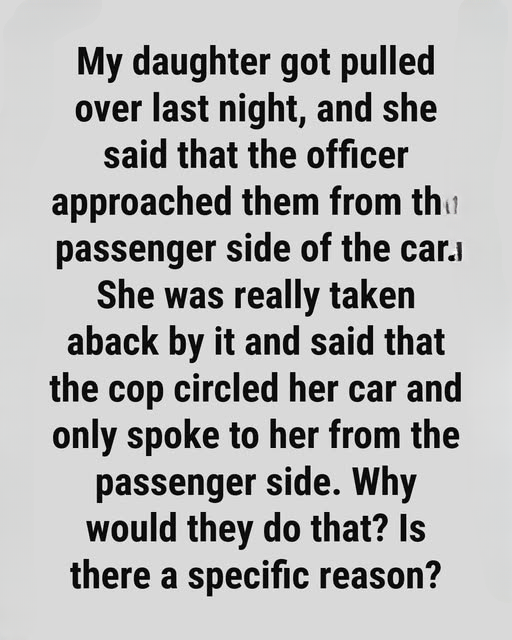Seeing flashing lights in your rearview mirror can immediately trigger anxiety, even for drivers who usually remain calm. The sudden red and blue glow can spark a surge of adrenaline, a faster heartbeat, and a mental loop of “Did I do something wrong?” While it might feel sudden or personal, what seems unpredictable is actually a structured, carefully planned process designed to prioritize safety for both the officer and the driver. Understanding how the process works can help reduce stress and make the interaction smoother.
Even before an officer turns on the lights and siren, there’s significant preparation happening behind the scenes. Officers first run the vehicle’s license plate through a database to check if it has been reported stolen, if its registration has expired, or if the driver has outstanding warrants. These checks happen within seconds, often while the officer is still patrolling, and they are intended to ensure the interaction is safe for everyone involved. Officers also radio dispatch with details about the vehicle, including its make, model, and license plate, and may request backup if the situation could be risky. They then select a location to make the stop, ideally one that is well-lit, has low traffic, and allows enough space for the vehicle to pull over safely. This careful selection isn’t meant to inconvenience the driver—it’s about creating a controlled environment where risks are minimized.
After the vehicle stops, the positioning of the patrol car is critical for safety. Officers usually park slightly offset behind the vehicle rather than directly behind it. This offset serves multiple purposes: it allows a safer path for the officer to approach, shields them from oncoming traffic, and provides better visibility of the car and its occupants. Some officers even turn their wheels outward as an added precaution in case they need to move quickly. As the officer approaches, they scan the interior for potential hazards, observe passenger movements, check for visible weapons, and may place a hand on the rear of the car to leave a fingerprint. Though it might seem unusual, this small step helps ensure accountability and officer safety.
When the officer reaches the driver’s side window, standard instructions usually follow. Drivers are asked to turn off the engine, roll down the window, and provide their license, registration, and proof of insurance. Sometimes questions are repeated, or passengers are addressed separately. These steps aren’t signs of mistrust—they are part of a protocol designed to assess the situation thoroughly and minimize misunderstandings. Safety during the stop is a shared responsibility. Drivers can assist by keeping hands visible, remaining calm, and waiting for clear instructions. This cooperation allows the officer to carry out their duties efficiently while reducing tension.
Traffic stops typically follow a predictable sequence. The flashing lights are not an accusation but a signal to caution and get attention. Knowing this framework can help drivers feel less targeted and more in control, even under stress. Most stops are brief, lasting only a few minutes, often ending with a short conversation, a warning, or an exchange of documents. Understanding why officers take each step helps drivers anticipate the process, reduce fear, and maintain safety.
It’s important to remember that the officer’s main goal is not to punish the driver but to ensure that everyone—including the officer—remains safe during the stop. Viewing it this way can change the experience: rather than feeling singled out or threatened, a driver can see the interaction as a cooperative safety measure. Staying polite, patient, and attentive allows the stop to proceed quickly and efficiently, often leaving both parties feeling secure.
In conclusion, seeing flashing lights doesn’t have to cause panic. Awareness of behind-the-scenes procedures—license plate checks, dispatch communication, vehicle positioning, and approach methods—can demystify the process and reduce anxiety. By keeping hands visible, following instructions, and staying calm, drivers protect themselves and support the officer’s efforts to protect everyone on the road. Traffic stops are usually routine. When approached with patience and understanding, they can be safe, brief, and even informative, rather than stressful. Recognizing the careful planning, purpose, and caution behind each step helps drivers remain composed, cooperate effectively, and respect the officer’s essential role in public safety.
